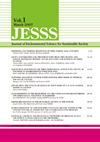Volume 1
Displaying 1-9 of 9 articles from this issue
- |<
- <
- 1
- >
- >|
-
2007 Volume 1 Pages 1-10
Published: 2007
Released on J-STAGE: March 30, 2007
Download PDF (610K) -
2007 Volume 1 Pages 11-14
Published: 2007
Released on J-STAGE: March 30, 2007
Download PDF (464K) -
2007 Volume 1 Pages 15-24
Published: 2007
Released on J-STAGE: March 30, 2007
Download PDF (687K) -
2007 Volume 1 Pages 25-32
Published: 2007
Released on J-STAGE: March 30, 2007
Download PDF (470K) -
2007 Volume 1 Pages 33-38
Published: 2007
Released on J-STAGE: March 30, 2007
Download PDF (855K) -
2007 Volume 1 Pages 39-46
Published: 2007
Released on J-STAGE: March 30, 2007
Download PDF (682K) -
2007 Volume 1 Pages 47-54
Published: 2007
Released on J-STAGE: March 30, 2007
Download PDF (1040K) -
2007 Volume 1 Pages 55-60
Published: 2007
Released on J-STAGE: March 30, 2007
Download PDF (503K) -
2007 Volume 1 Pages 61-66
Published: 2007
Released on J-STAGE: March 30, 2007
Download PDF (146K)
- |<
- <
- 1
- >
- >|
